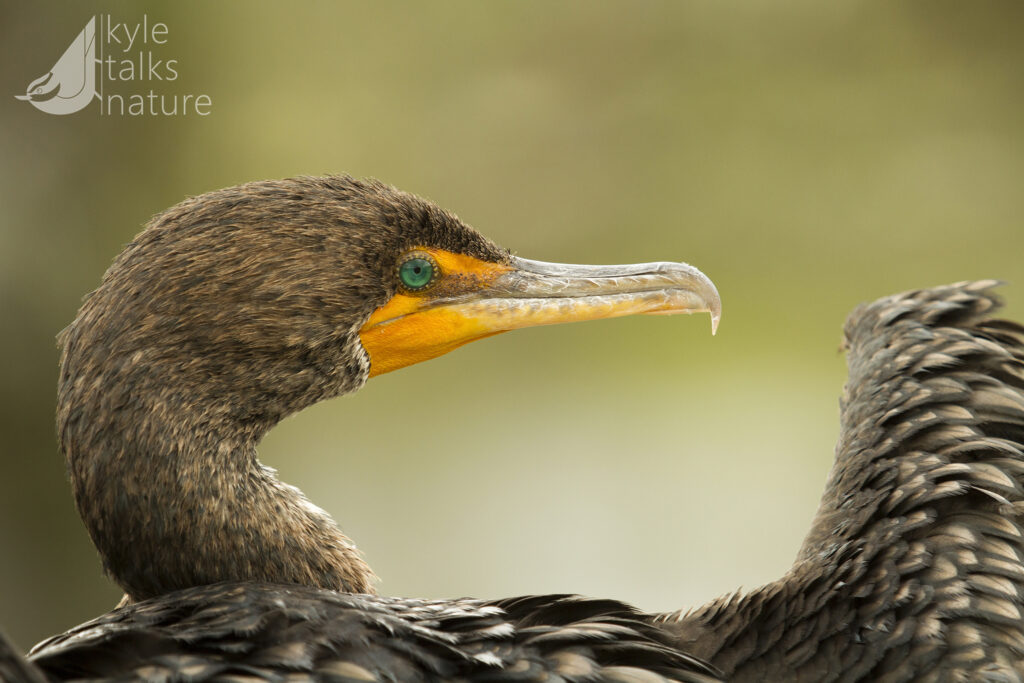If there was an award for the most-reviled bird here in my home province of Ontario, Canada – or maybe throughout the Great Lakes region – choosing a winner would be an easy task.
Perhaps the Canada Goose springs forward in your mind. These loud, abrasive, gregarious birds are hated by many for their aggressive territoriality and ubiquitous pooping. But they also swim around in ponds and eat stale bread that people shouldn’t feed them. They can be endearing when they’re not chasing you across a parking lot. Canadians even regard them with a certain reverance, perhaps as a counter-symbol to the politeness our nation is known for.
Maybe, then, you think of the Ring-billed Gull. Certainly it’s noisy and aggressive too, and happy to make an assertive play for your delicious french fries or ice cream. And unlike the goose its pooping is aerial, and that makes you a target. It is indeed true that these birds are broadly disliked, but they are also graceful flyers and overall harmless.
Could it be the Turkey Vulture, then, that contends for the crown? Carrion-eaters never did win any friends, and their black plumage only augments the association with death. They’re also bald and wrinkly with beady eyes, and this leads many uncultured people to erroneously consider them ugly. But generally people are not familiar enough with Turkey Vultures to hate them. They don’t confront you in your daily life, instead flying high in the sky or roosting in inconspicuous places.
These are all fine nominees for our prize, but there is a bird more hated than all the rest by a country mile. That bird is – without question – the Double-crested Cormorant.

Like probably many of you, I am a member of my regional birding-related Facebook group. Once a month or so, somebody says the word “cormorant” in this group and a torrent of vitriol ensues. Adding fuel to the fire this month is the Ontario government’s introduction of a “fall harvest” for cormorants, which is most certainly a cull in sheep’s clothing.
There are many (many) issues with this harvestcull, but that’s not what I’m on about today. Ontario Nature has provided a nice, digestible place to start with seven good reasons to condemn the hunt.
What interests me more than the hunt itself is that birders and bird-likers are not universally against it. Many bird-minded folks seem to hate cormorants just as much as the non-bird-minded, and are quite happy to jump on the cull bandwagon. All the unchecked disdain for these interesting birds inevitably gets me pondering.
Upon consideration, there seem to be three main reasons that Ontarians dislike cormorants. Fortunately, each one is demonstrably stupid. I mean unjustified. No I mean stupid. Here they come.
Reason #1 – Cormorants are Invasive/Non-native to Ontario
I don’t know how this got started, but damn near everybody believes these birds don’t belong here. In a recent comment thread in the aforementioned Facebook group, one gentleman cursed them as “another invasive species from Asia”, while another opined that they are a saltwater bird with no place in freshwater lakes.
The truth – as you might imagine – is neither of these things. Double-crested Cormorants are native to only one continent, and it ain’t Asia. Here in North America they are widespread, occurring on both coasts (yes, saltwater) and inland across much of the continent, especially the prairies (freshwater).

It is true, however, that they have not always been native on the Great Lakes. While cormorants have existed in northwestern Ontario for centuries, they did not breed on the Great Lakes until the prairie population expanded eastward in the early 1900s. It is worth noting that this expansion occurred under the bird’s own steam, and is therefore distinct from the human-caused introduction of birds like European Starling or House Sparrow.
Clearly, then, the Double-crested Cormorant is a freshwater-loving, native Ontario species that has simply expanded its range to take advantage of some new opportunities. Which brings us neatly to complaint #2.
Reason #2 – Cormorants Eat All the Sportfish
There are two facets to my response to this issue: the facts about it, and my feelings about it. First the facts. There have been numerous studies which show that cormorants do not significantly impact sportfish populations. One study demonstrated statistically that sportfish are a far greater threat to other sportfish than cormorants are. It turns out that cormorants absolutely love non-native fish like Round Goby, Alewife and Rainbow Smelt, and it’d be pretty tough to complain about an ‘introduced’ species eating introduced species.
Beyond the facts, it absolutely drives me up the wall when anglers complain that they’ve been “fishing for 50 years and there are fewer fish than there used to be, so the cormorants must be eating them all”. It’s as if:
a. There’s literally nothing else that could be causing the decline (ahem, like all the fishing that’s been going on, ahem) and…
b. Human anglers have a greater right to the fish than a wild bird does.
When it comes to the appreciation – or lack thereof – of nature, humans can be extremely self-centred. Enter complaint #3.
Reason #3 – The Nesting Colonies of Comorants are Ugly
This complaint is typically thinly disguised as genuine ecological concern. Folks will be upset that cormorant colonies kill trees and exclude other wildlife. Then when you explain that these colonies are highly localized and have no significant impact on surrounding areas, complainants simply fall back on the fact that they’re ugly and smelly. I had a lengthy argument once with a lady who – by the end – stood in favour of culling cormorants because they pooped on her boat. It would be difficult to sound more selfish and entitled.
It is interesting that you don’t hear complaints about other colonially-nesting waterbirds. Herons, murres, penguins and gannets also make colonies, and they are no treat for the nose either. But the cormorant loses the PR battle here on two fronts. First, they make their colonies in populated places like urban waterfronts and cottage lakes. Second, people perceive the bird itself – like the colonies it inhabits – to be ugly.

To me this is the crux of the entire situation. If the cormorant looked like a swan, nobody would bat an eye. Need proof? Mute Swans are introduced by humans (from Europe), highly invasive, destructive to wetlands, and a stronger competitor than our native waterfowl. They actively damage our native ecosystems, they have a big ugly knob on their face, and they’ll completely destroy you if you walk too close to a nest. But they’re white, and graceful, and well spoken-of in historical literature. They’re associated with goodness, and romance. Try to introduce a Mute Swan cull and you’ll be the one staring down the barrel.
I won’t put my hand up and say that there’s zero need to manage the Double-crested Cormorant. Its population history on the Great Lakes has been turbulent at best, and there may be issues now or in the future. In any case a free-for-all hunt is probably not a great way to do it. But what really eats my lunch is how people – even people who claim to love birds and nature – can be completely without compassion for a bird simply doing what its little bird brain tells it to do. No species deserves to be talked about the way people talk about cormorants.
If you’d like to learn more about the history of cormorants on the Great Lakes (and can persevere through a somewhat dry read) I recommend this report prepared by Environment Canada. If you’d like to see the actual proposal and subsequent decision regarding the hunt in Ontario you can find it at the Environmental Registry of Ontario. And if you’d like to make the world a generally better place (in my opinion) consider the language we use when discussing ‘unfavourable’ species, and how we can engage in more productive – and positive – discussion.
Rant: over.

